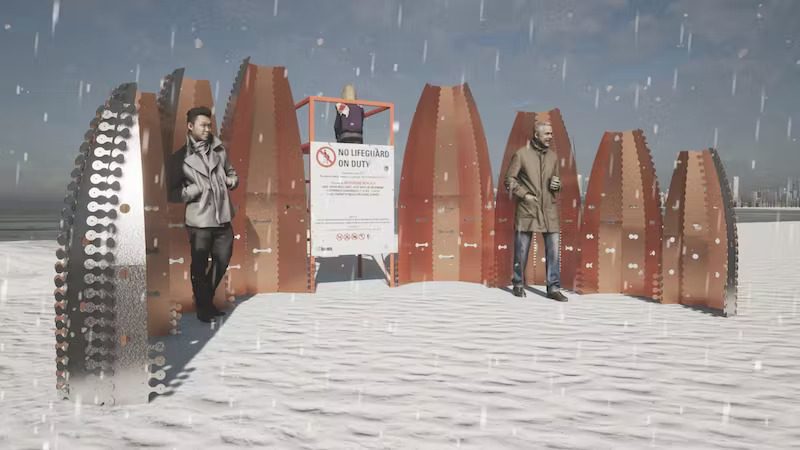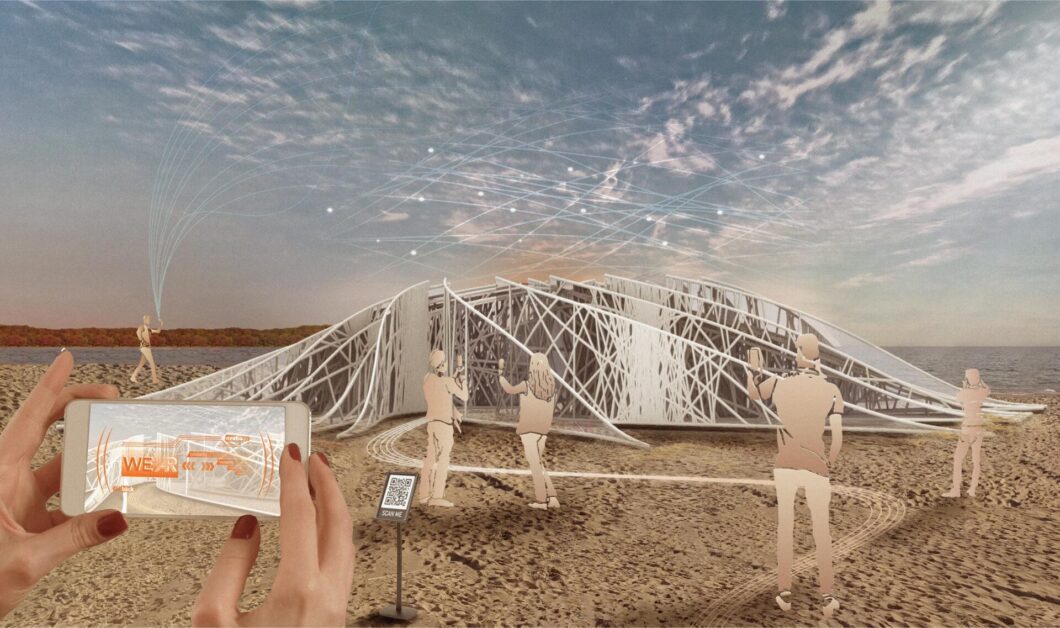Architecture students from three Ontario universities are putting their artistic and creative skills to the test by building winter designs around public lifeguard posts at the Toronto Beaches.
Winter Stations is an annual, single-stage international design festival. Art installations from six of the eight recently declared winners will be on display from Feb. 20 to April 3, with the other two on display at a location in Mississauga.
Among the winners are students from the Toronto Metropolitan University, University of Guelph and University of Waterloo – educational partners behind this year’s event.
“We’re putting all these skills on an international level and being able to articulate a design for us means a lot.”
Cesar Rodriguez Perfetti, Toronto Metropolitan University student
The competition was established as a collaboration between local firms RAW Design, Ferris + Associates and Curio in 2014. Their mission is to invite international design and the art community to illustrate the beauty of the Toronto beaches during the colder seasons.
Winter Stations has garnered worldwide interest, having received entries from more than 90 countries since it launched, according to their website.
Theme for 2023: Radiance
The winning designs for Winter Stations 2023 were chosen by a jury, which included Beaches-East York Councillor Brad Bradford, East-York MPP Mary-Margaret McMahon; and Melissa Agostino, creative director and co-founder of Sali Tabacchi, a design agency based in Toronto.
“Radiance” was selected as this year’s theme, to recognize society’s ability to adapt to change and embrace life, despite navigating through uncertain circumstances.
Entrants were tasked to submit a temporary art design, situated around the lifeguard stations along the beaches, which spoke to the chosen theme.
“Radiance is a powerful thing to harness, as it reflects brilliance, inner security, kindness, and gratitude,” according to Winter Stations’ guidelines. “It’s also unique in that it has a positive ripple effect from its origin.”

Team members from Toronto Metropolitan University Department of Architectural Science, led by Associate professor Vincent Hui, are students: Cesar Rodriguez Perfetti, Jake Kroft, Breno Gualter, and Dean Roumanis. The project, Ripple Hut, pays homage to the standard means of transportation during the fur-trade era.
“The idea of how fundamental canoes were in developing transportation” was an influential factor in their brainstorming, Kroft said. “It’s referencing how important canoes were to things like transportation and how important things like shelter were on a cold beach with winds that are experienced there.”
Team members from the University of Waterloo Department of Architecture, led by faculty supervisors David Correa and Fiona Lim Tung, are also students: Chiun Lee, Diana Si, Justin Park, Razmig Garboushian, Likhitha Varikuti and Simon Liao. Their project, Winter-Net, incorporates layers of netting, capable of catching snow and sand carried from the gusts of wind.
“We wanted to use fabric that invites interaction and capitalizes on the wintery conditions,” Park said. “The layered netting is meant to act as a blank canvas.”
Team members from the University of Guelph, School of Environmental Design and Rural Development, led by assistant professor Afshin Ashari are: Saina Amin, Craig Klomp, Lauren Mac Isaac, Catherine Yan, Mahmoud Afshari, Kaveh Eshraghian, and Roozbeh Moayyedian. Their project, WE[AR], uses a component of radiance which promotes community.
“WE[AR] encourages connection, humanism, and the strength of living in community by demonstrating the power that can be achieved when a community pulls together,” according to the design team’s statement on Winter Stations’ website.

Thousands of observers are expected to visit the beaches to view and interact with the art structures. The amount of attention Winter Stations produces can be highly beneficial for the participants, Perfetti said.
“We’re putting all these skills on an international level and being able to articulate a design for us means a lot,” he said. “Having a lot of exposure and having the experience of building it [the structure] helps us build the professional experience we’re looking for when applying for jobs.”
Among the rest of the winners whose art structures will be on display are design teams from Canada, United Kingdom and Mexico.
Visitors can find the installations structured around existing lifeguard stations along the city’s Kew and Woodbine beaches, stretched between Woodbine Ave. and Victoria Park Ave.

